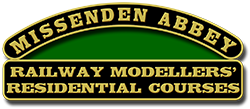The subject here is an Oxford Rails Janus
Tools
- Rigger brush – long bristles to hold plenty of fluid and sharp point to place the fluid accurately.
- Glass dish – won’t be attacked by solvent and used to hold clean white spirit.
- Paper towels – to clean up the mess.
Materials
MIG Productions Dark Wash – my favourite, but any dark coloured wash will do the job. I favour enamel washes as they always seem to work well, but you may prefer to use acrylic washes. If using acrylics, then any mention of white spirit should be read as acrylic thinners.
Even though a wash is, essentially, a ready-thinned paint, it can be thinned even further to allow it to be used to highlight detail using capillary action.

In the case of the Janus, the grille detail on this bright yellow example can be made more prominent by adding a dark coloured wash to the appropriate areas.
Start by dipping the rigger brush into clean white spirit before just touching the tip of the bristles into the wash. Touch the tip of the brush to any corner of detail and watch the fluid flow along the edges and corners.
In this picture, the tip of the brush has been touched to the top right-hand corner of the grille and then moved downwards one slat at a time. In this example the wash is too thick, and hasn’t flowed very well, so the tip of the brush needs to be dipped into the white spirit again, to thin it out a little more.

Once the grilles were all completed, attention turned to the panel edges and other detail lines. There are many blobs! There will be blobs, it is inevitable, but don’t worry about them because they can be dealt with later.
The wash has been allowed to run into all the crooks and nannies moulded into the bonnet area. You should be able to identify all the places where the tip of the brush was placed against the detail. If the wash does not run far enough, just leave the tip of the brush in place for a bit longer.
In some cases, the wash will not run far enough, even though the tip of the brush has been left in place for longer. When this happens the tip of the brush can be placed appropriately to add more fluid to the detail. The three white arrowheads show where this has been done in this example.
